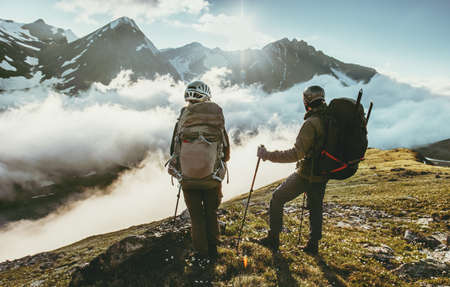Introduction to Conservation Photography in the British Isles
The British Isles, with their patchwork of rugged coastlines, ancient woodlands, windswept moorlands, and rolling green pastures, are home to some of the most diverse and evocative landscapes in Europe. From the wild Highlands of Scotland to the tranquil fens of East Anglia, these islands support a remarkable array of wildlife—red squirrels darting through pine forests, puffins nesting on remote sea cliffs, and otters slipping silently along riverbanks. Yet beneath this surface beauty lie profound environmental challenges. Habitat loss, climate change, invasive species, and shifting land use patterns threaten both flora and fauna. Against this backdrop, conservation storytelling through documentary photography has emerged as a vital tool. By capturing the intricate connections between land, wildlife, and people, photographers can illuminate both the wonders that remain and the urgent need for action. Their work not only documents change but also inspires communities across Britain and Ireland to value and protect their shared natural heritage.
2. The Power of Visual Storytelling
Documentary photography holds a unique ability to transcend barriers and communicate conservation issues in the British Isles with clarity and emotional resonance. Through carefully composed images, photographers highlight the urgent need for preservation—making abstract environmental challenges both tangible and immediate for viewers from all walks of life. In the context of Britain’s richly varied landscapes, from Scottish Highlands to Cornish coastlines, these visual narratives bridge the gap between scientific data and public understanding.
How Documentary Photography Engages Audiences
Visual storytelling leverages the innate human response to imagery. Unlike written reports or policy documents, photographs can evoke empathy and spark curiosity, drawing attention to local wildlife, habitats, and communities affected by environmental changes. By documenting real-life stories—be it the decline of pollinators in Kent or successful peatland restoration in Yorkshire—photographers provide entry points for conversations about conservation that might otherwise remain inaccessible.
Impact on Different Stakeholders
| Stakeholder Group | Photographic Impact |
|---|---|
| Local Communities | Fosters pride in regional heritage; encourages grassroots conservation efforts through relatable stories. |
| Policymakers | Presents compelling evidence supporting environmental legislation; personalises abstract issues. |
| Wider Public | Raises awareness beyond local borders; inspires action such as volunteering or charitable giving. |
Case Example: The River Thames Clean-Up
A series of documentary images following volunteers along the Thames highlighted not only the scale of plastic pollution but also individual efforts to restore river health. These images were shared widely on social media and featured in national news outlets, contributing to increased participation in clean-up events and influencing local council policies on waste management.
In summary, documentary photography serves as both witness and catalyst within British conservation efforts. By turning complex problems into accessible stories, photographers empower communities, inform policy debates, and galvanise audiences across the UK to protect their natural heritage.

3. Cultural Context: British Heritage and Conservation
Britain’s approach to conservation is deeply rooted in its unique cultural history and traditions, shaping the narratives that emerge in documentary photography. The reverence for heritage is visible in the way landscapes, architecture, and even local customs are preserved and celebrated. From the rugged beauty of the Lake District to the carefully maintained commons of London, each green space tells a story interwoven with centuries-old values and identities.
The Legacy of National Parks
National parks in the British Isles are more than just protected areas—they are symbols of collective memory and pride. Established in response to public demand for access to nature, these parks embody a long-standing belief in the restorative power of the countryside. Documentary photographers often frame these spaces not only as havens for wildlife but also as living testaments to campaigns for public rights, such as the famous Kinder Scout Mass Trespass. Through their lenses, photographers highlight how these landscapes remain sites of both ecological importance and social significance.
Urban Green Spaces: A Community Affair
In cities across Britain, urban green spaces—from Victorian parks to allotment gardens—reflect evolving attitudes towards conservation within densely populated environments. These spaces offer insight into community-driven stewardship, where local groups champion biodiversity and inclusivity. Photographers documenting urban conservation efforts capture this dynamic interplay between heritage and innovation, showing how modern Britons reinterpret traditional notions of stewardship to address contemporary environmental challenges.
Tradition Meets Modern Conservation
British conservation stories are often characterised by a blend of respect for tradition and a willingness to adapt. Practices such as hedgelaying or dry-stone walling, once essential rural skills, now feature in projects aiming to revive habitats while honouring historical techniques. Documentary photography plays a crucial role in illustrating how these practices bridge past and present, encouraging a broader appreciation for both cultural continuity and ecological responsibility.
In essence, the narrative threads running through British conservation efforts—whether rural or urban—are inseparable from the nation’s heritage. By exploring these connections through documentary photography, storytellers reveal how history continues to inform contemporary approaches to safeguarding Britain’s natural and cultural treasures.
4. Case Studies: Notable Conservation Projects
Documentary photography has the power to shine a light on conservation efforts that might otherwise go unnoticed. Across the British Isles, a diverse range of projects—both rural and urban—have been brought to public attention through compelling photographic storytelling. In this section, we present several case studies that exemplify successful conservation initiatives, demonstrating the vital role of visual narratives in environmental advocacy.
Rural Conservation Successes
| Project Name | Location | Main Focus | Photographic Impact |
|---|---|---|---|
| The Flow Country Restoration | Scottish Highlands | Peatland restoration and biodiversity recovery | Images capturing seasonal changes and wildlife returning to revitalised bogs have raised awareness about carbon sequestration benefits. |
| Knepp Rewilding Project | West Sussex, England | Rewilding farmland to promote native species and ecological processes | Photo essays documenting free-roaming livestock, rare butterflies, and thriving wildflowers have inspired similar projects nationwide. |
| The BurrenLIFE Project | County Clare, Ireland | Sustainable farming for limestone pavement habitats | Intimate portraits of farmers and landscapes illustrate the human-nature relationship at the heart of this success. |
Urban Conservation Initiatives
| Project Name | Location | Main Focus | Photographic Impact |
|---|---|---|---|
| Liverpool Green Streets Initiative | Liverpool, England | Transforming derelict spaces into community gardens and wildlife corridors | Before-and-after photo series highlight the dramatic improvement in local quality of life and biodiversity. |
| Bristol Avon Otter Project | Bristol, England | Reintroduction of otters into urban waterways | Candid shots of otters navigating city canals have captured public imagination and strengthened local support for waterway protection. |
| Dublin Urban Bees Programme | Dublin, Ireland | Promoting pollinator-friendly planting in city parks and rooftops | Macro photography of bees amidst city skylines illustrates the intersection of urban living and nature. |
The Role of Photographers in Shaping Perception
The photographers involved in these projects often act as intermediaries between conservationists and the wider public. By carefully selecting moments that convey both struggle and hope, they give voice to landscapes and species under threat. Their work not only documents change but also encourages it—illustrating how visual storytelling can mobilise communities, influence policy decisions, and secure funding for future initiatives.
A Note on Ethics and Representation in Case Studies
An essential consideration when presenting these stories is ethical representation. Photographers must be sensitive to both human communities and wildlife subjects, ensuring their work respects privacy, consent, and ecological integrity. This approach upholds the credibility of conservation narratives while fostering trust among audiences who may ultimately become stakeholders in these ongoing efforts.
Towards a Broader Conservation Dialogue
The following case studies are just a sample of the many conservation efforts underway across the British Isles. Together, they illustrate how documentary photography serves as a catalyst for broader dialogue—a tool not just for observing change but for inspiring it at every level from local communities to national policy.
5. Ethics and Authenticity in Documentary Photography
Documentary photography, especially within the realm of conservation in the British Isles, demands a steadfast commitment to ethical practices and authenticity. The power of images to shape public perceptions and influence policy means that photographers must tread carefully, ensuring their work is both truthful and respectful.
Sensitivity to Local Communities
When documenting conservation efforts, it is crucial to engage with local communities in a manner that honours their perspectives and traditions. Photographers should approach subjects with humility, seeking permission where appropriate and avoiding exploitation or misrepresentation. By building trust and fostering open dialogue, photographers can better capture the authentic experiences and challenges faced by those most intimately connected with the land and wildlife.
Accurate Portrayal of Conservation Challenges
The landscapes of the British Isles are home to complex conservation issues—ranging from coastal erosion to habitat loss and species decline. It is vital that documentary photographers avoid sensationalism or oversimplification. Instead, their work should strive to present the nuanced realities faced by conservationists, volunteers, and affected communities. This may mean documenting setbacks as well as triumphs, offering viewers a balanced perspective on what is at stake.
Maintaining Integrity in Storytelling
In an era where digital manipulation is rife, maintaining integrity in storytelling is non-negotiable. Photographers must resist the temptation to stage scenes or alter images in ways that mislead audiences. Authenticity underpins the credibility of conservation stories, ensuring that public support and policy responses are based on accurate information rather than fabricated narratives.
Ultimately, ethical documentary photography within British conservation is about more than simply capturing striking images—it is about upholding responsibility to subjects, viewers, and the broader cause of environmental stewardship. By adhering to these principles, photographers help foster understanding and meaningful engagement with the pressing issues facing the natural heritage of the British Isles.
6. Practical Guidance for Aspiring Conservation Photographers
Embarking on a journey as a conservation documentary photographer in the British Isles can feel daunting, but with the right approach and preparation, it becomes an immensely rewarding endeavour. Here are some practical steps and advice tailored to the unique context of Britain’s landscapes, wildlife, and environmental issues.
Essential Equipment for British Conditions
The unpredictable weather across the UK demands robust and weatherproof gear. Start with a reliable DSLR or mirrorless camera, ideally with weather-sealed lenses. A sturdy tripod is invaluable for low-light woodland or coastal scenes. Don’t overlook waterproof cases and lens cloths—rain showers are rarely far away. For fieldwork in remote areas like Scottish moorlands or Welsh uplands, lightweight backpacks and protective clothing make long days more manageable.
Building Connections: Organisations and Networks
Collaboration is vital within the UK conservation community. Consider reaching out to established organisations such as the Wildlife Trusts, RSPB (Royal Society for the Protection of Birds), Scottish Wildlife Trust, or The National Trust. Many offer volunteer opportunities and citizen science projects that provide access to sites and local expertise. Joining groups like the British Ecological Society or local photography clubs will help you build skills and find potential collaborators.
Recommended Fieldwork Practices
Understand Local Ecology and Issues
Familiarise yourself with regional conservation priorities—whether that’s peatland restoration in Northern England or marine protection along Cornwall’s coast. Reading reports from NGOs or attending local talks ensures your storytelling is relevant and informed.
Respect Access Rights and Etiquette
The UK’s Right to Roam laws vary between Scotland, England, Wales, and Northern Ireland. Always check land access rights before venturing out, close gates behind you, and be mindful of nesting seasons to avoid disturbance.
Ethical Storytelling
Documentary photography carries a responsibility to truthfully represent people, places, and wildlife. Seek permission when photographing private landowners or communities involved in conservation projects. Avoid baiting or stressing animals; patience yields more authentic images.
Nurturing Your Practice
Start locally—document changes in your nearest park, reserve, or coastline. Share your work through exhibitions at community centres or online platforms like Bristol Nature Network. Over time, you’ll develop both a portfolio and a deeper understanding of Britain’s rich conservation tapestry.
7. Looking Forward: The Evolving Role of Photography in British Conservation
As we look ahead, documentary photography stands on the cusp of significant transformation within the British Isles. The intertwining challenges of climate change, shifting government policies, and evolving public attitudes demand a fresh approach to conservation storytelling. In this dynamic context, the camera remains a vital tool—but its function is expanding beyond simply recording beauty or loss. Now, it must also inspire action, foster dialogue, and bridge divides.
The Digital Age and Storytelling Innovation
British conservation photographers are increasingly leveraging digital platforms to reach broader audiences. Social media campaigns, interactive exhibits, and immersive online galleries allow local stories—such as Scottish rewilding projects or the return of beavers to English rivers—to resonate far beyond traditional nature magazines. These new channels not only democratise access but also invite community participation, encouraging people across the UK to become storytellers in their own right.
Collaboration Across Sectors
Photography’s future impact will depend on stronger collaborations between artists, scientists, policymakers, and grassroots organisations. In a country where land ownership and access rights remain contentious issues, images can illuminate complexities that might otherwise be lost in policy documents. By visually articulating both ecological threats and successful interventions—from peatland restoration in Wales to urban greening initiatives in Manchester—photographers help ensure that conservation efforts remain visible and relatable to all stakeholders.
Navigating Political Change
With political landscapes in flux—especially post-Brexit—the role of photography is more crucial than ever in advocating for nature-friendly legislation and funding. Powerful imagery can galvanise support for threatened habitats or highlight the resilience of local communities adapting to environmental pressures. As debates around land use intensify, documentary photographers have an opportunity (and responsibility) to present nuanced narratives that challenge stereotypes and celebrate diversity within Britain’s countryside.
Championing Inclusion and Representation
Ahead lies a need for greater inclusion within conservation photography itself. Amplifying voices from underrepresented regions and backgrounds—whether that’s young urban activists in London or farmers in Northern Ireland—will enrich the national conversation about our relationship with the natural world. Diverse perspectives can reveal overlooked stories and foster empathy at a time when unity is essential for meaningful change.
In sum, as Britain’s ecological and political realities evolve, so too must our methods of conservation communication. Documentary photography, rooted in truth-telling yet open to innovation, will continue to play a pivotal role—helping us see not just what is at stake, but what is possible when we come together for nature.

